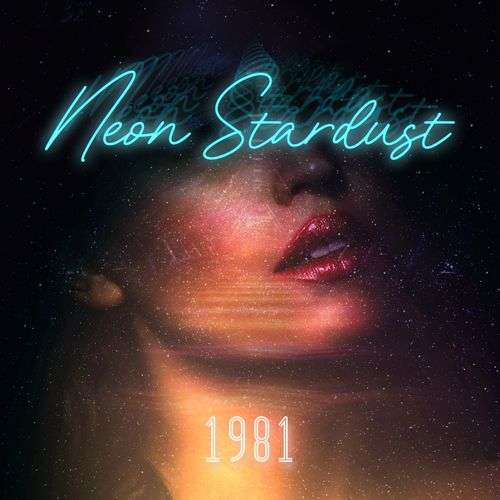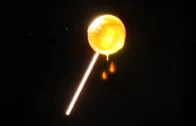Neon Stardust’s “1981”: A Retro-Futuristic Journey Through the Synthwave Galaxy

Album Review: Neon Stardust’s “1981”: A Retro-Futuristic Journey Through the Synthwave Galaxy
Written By: Dan Eachus
The neon-soaked nostalgia of the 1980s has proven to be an enduring source of inspiration for musicians across genres, but few have navigated this territory with as much finesse as Tommi Ignatius, the mastermind behind the solo project Neon Stardust. Ignatius, hailing from Finland, brings his distinctive touch to the synthwave scene, where he combines the best of both worlds – the retro charm of the ’80s and a contemporary twist. In 2023, Neon Stardust released his debut album, “1981,” a mesmerizing exploration of sonic landscapes that transports listeners to a bygone era while keeping one foot firmly planted in the present.
“1981” opens with the track “Kids,” a shining beacon of what’s to come on this album. Right from the start, Neon Stardust bathes the listener in a wave of lush synthesizers and a pulsating drumbeat, instantly evoking images of neon-lit streets and arcade game parlors. The song captures the youthful spirit of the ’80s, filled with a sense of innocence and wonder that’s hard to resist. Ignatius’s vocals, soaked in reverb, carry an air of nostalgia that perfectly complements the track’s theme.
One of the standout tracks on the album is “Midnight Sun.” With its irresistible melody and infectious rhythm, this song feels like the soundtrack to a cinematic night drive through a cyberpunk cityscape. Ignatius’s vocal performance here is particularly noteworthy, as he effortlessly blends a sense of longing and optimism into his delivery. The lyrics paint a vivid picture of a world where the night is endless, and Neon Stardust’s production perfectly encapsulates that feeling.
As we delve deeper into the album, “Lights Out” emerges as another gem in the Neon Stardust catalog. It’s a pulsating synthwave anthem that oozes energy and urgency. The combination of soaring synths, powerful guitar riffs, and Ignatius’s emotive vocals makes this track an absolute standout. It’s the kind of song that will have you reaching for your air guitar and dancing in front of your bedroom mirror, lost in the music’s electrifying embrace.
“1981” is not just about catchy hooks and infectious melodies; it’s also an album that takes its listeners on an emotional journey. Tracks like “Dancing in Tears” and “Night Time” showcase Neon Stardust’s ability to tap into deeper, more introspective themes. Dancing in Tears” is a poignant ballad that tugs at the heartstrings, with Ignatius baring his soul as he sings about love and loss. The haunting synths and delicate instrumentation create an atmosphere of melancholic beauty.
On the other hand, “Night Time” offers a glimpse into the darker corners of the ’80s aesthetic. With its brooding synths and vocoded lyrics that hint at the enigmatic allure of the past, this track adds a layer of complexity to the album’s narrative. It’s a reminder that the ’80s weren’t just about neon lights and flashy fashion; there was also a sense of mystery and intrigue that Neon Stardust captures brilliantly.
The production on “1981” is nothing short of stellar. Tommi Ignatius’s meticulous attention to detail shines through in every track. The synth arrangements are lush and immersive, and the use of analog synthesizers gives the music an authentic vintage warmth. The guitar work adds a rock ‘n’ roll edge to the synthwave sound, creating a unique sonic fusion that sets Neon Stardust apart from the crowd.
The album’s pacing is well thought out, taking the listener on a dynamic journey that ebbs and flows between moments of high energy and introspection. This careful balance keeps the album engaging from start to finish, ensuring that there’s never a dull moment.
Neon Stardust’s vocals are a highlight throughout the album. Ignatius’s voice is both evocative and versatile, allowing him to convey a wide range of emotions. Whether he’s singing about love, longing, or the allure of a bygone era, his vocal delivery is consistently captivating. The reverb-soaked production adds an ethereal quality to his voice, enhancing the overall atmosphere of the music.
In terms of lyricism, Neon Stardust doesn’t shy away from introspection. The lyrics on “1981” touch on themes of nostalgia, love, and the passage of time. While some tracks delve into the past with a sense of longing, others grapple with the complexities of the present. This lyrical depth adds an extra layer of resonance to the album, inviting listeners to reflect on their own experiences and emotions.
“1981” is a testament to Neon Stardust’s artistic vision and musical prowess. It’s an album that not only pays homage to the ’80s but also pushes the synthwave genre forward with its modern sensibilities. Tommi Ignatius’s ability to craft songs that are both catchy and emotionally resonant sets him apart as a standout artist in the synthwave scene.
In conclusion, “1981” by Neon Stardust is a sonic journey through the neon-soaked landscapes of the 1980s, brought to life with a contemporary twist. From the infectious energy of “Lights Out” to the introspective beauty of “Dancing in Tears,” this album offers a diverse and captivating listening experience. Tommi Ignatius’s talents as a songwriter, composer, and vocalist shine brightly on this debut release, and it’s clear that Neon Stardust is a force to be reckoned with in the world of synthwave. As we eagerly await more releases from this project, “1981” stands as a must-listen for fans of the genre and anyone in search of music that transports them to a retro-futuristic dreamland.






